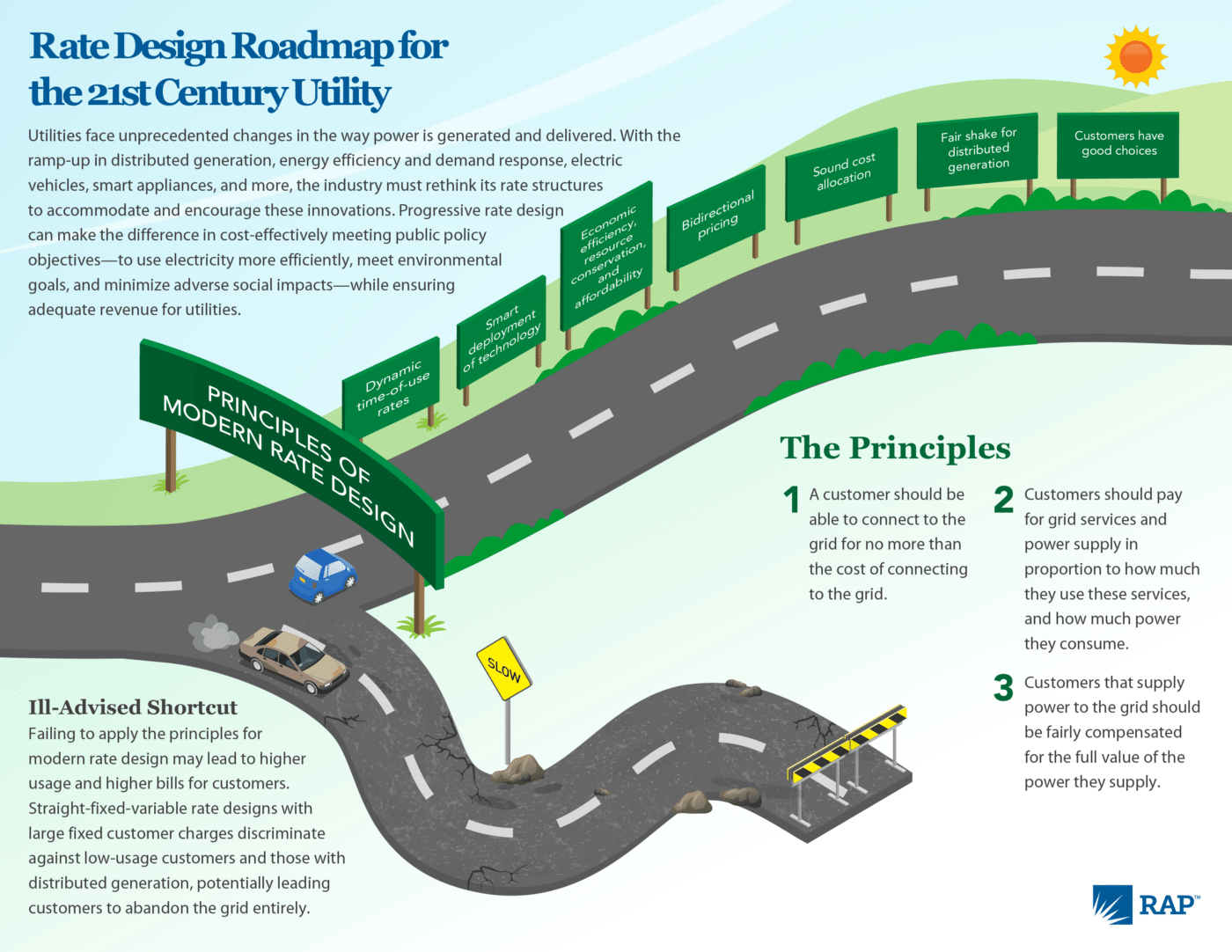The electric utility industry is facing a number of radical changes, including customer-sited generation and advanced metering infrastructure, which will both demand and allow a more sophisticated method of designing the rates charged to customers. In this environment, traditional rate design may not serve consumers or society best. A more progressive approach can help jurisdictions meet environmental goals and minimize adverse social impacts, while allowing utilities to recover their authorized revenue requirements. In this paper, RAP reviews the technological developments that enable changes in how electricity is delivered and used, and sets out principles for modern rate design in this environment. Best practices based on these principles include time-of-use rates, critical peak pricing, and the value of solar tariff.


